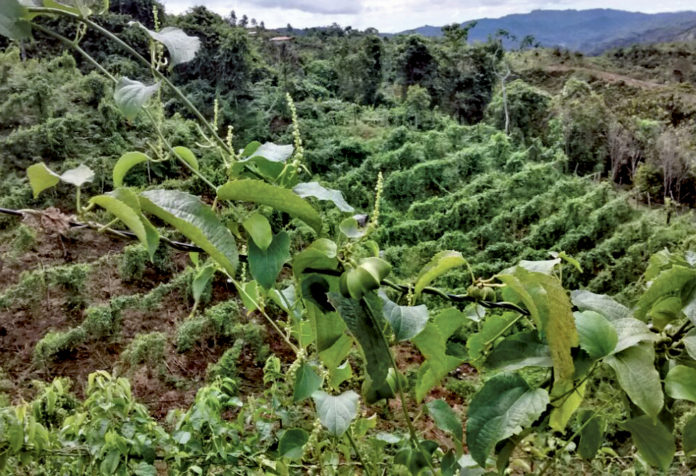https://thecitypaperbogota.com/business/sancha-inchi-the-next-superfood-from-colombia/17410 via @citypaperbogota
In our insatiable quest for the latest superfood, sacha inchi is a rising star. A plant native to Colombia, it produces bright green plump star-shaped fruit with four to seven points, each point containing a nutritious seed. The seeds are high in protein, antioxidants and fatty acids. These nutritious seeds can be processed into a range of healthy products: protein powder, beauty creams and cooking oil. The protein powder is great for morning shakes, and beauty creams full of age-fighting antioxidants. And the cooking oil is rich in omega-3s, a healthy fatty acid that plays an important role in healthy brain function, reducing cardiovascular disease and improving immune function.
SachaColombia is an innovative social business working to bring the health benefits of sacha inchi to the rest of the world, ensuring peace and prosperity in Colombia at the same time. How will they do this? Not only is sacha inchi a promising superfood, it is also a potential alternative to coca cultivation. Given the recent explosion of coca production, it is more important than ever to find profitable alternatives to an illegal and destructive industry.
According to SachaColombia, sacha inchi has the capacity to replace illegal crops. This is based on two elements: that sacha inchi is the right crop and that SachaColombia has the right business model to compete with the profitability of coca.
Sacha inchi matures quickly so farmers can start earning a living within the first year. Sacha inchi flowers five months after being planted, and bears seeds around the eighth month. This pace is similar to the rapid growth of a coca plant. Like coca, sacha inchi is a native plant, so it is particularly suited to its Colombian environment. In fact, the best place to cultivate sacha inchi is in exactly the same ecosystem where coca grows. According to SachaColombia, one hectare of land can produce 3 kilos of sacha inchi seeds vs. 2.15 kilos of coca.
After examining several native crops, the entrepreneurs determined that sacha inchi was the most competitive replacement for coca. Once they had their crop, they went to work on their business model. Ironically, SachaColombia looked to the crop they were trying to replace for inspiration. After all, the cocaine industry while highly illegal, is also highly profitable. Sacha Colombia studied forty coca municipalities, and even interviewed imprisoned drug lords who were amenable to sharing their business model. The secret it seemed, is in the value chain.
Sadly for Colombia, coca is the most integrated agro-industry, which allows local producers and drug traffickers to capture more profit from the value chain. The drug lords integrated the value chain right up to the fast boats that transported the white powder to the United States. If sacha inchi wanted to replace coca, it would need to develop an integrated value chain where the crop could be processed locally, making it more profitable for local farmers. At SachaColombia, farmers own a full 50% of the entire value chain.
To gain broad local support, SachaColombia created a distributive business model that incorporates farmers as partners, processing unit owners and local business leaders. Everyone shares in the success of the business. And there are incentives to spread the model. If a member of the co-op teaches a new group the business, they get a portion of the profits from that group too. This helps the co-op transfer knowledge quickly and produce larger volumes. They call this unique blend of sharing success while providing incentives to perform, solidarity capitalism.
This distributive business model allows rural communities to keep more of the profit locally. This means farmers will be more prosperous and the standard of living will rise. Improving the equitable distribution of wealth between rural and urban communities is an important step to a more stable, safe and peaceful Colombia.
The start-up has an impressive track record. In 2014, they had 1 unit in Cauca. Today they have 110 units throughout the country and have grown to 3,700 farmers. They plan to continue expanding in the 15 departments in Co- lombia where sacha inchi can be grown, including Cundinamarca. They aim to destroy Colombia’s reliance on illegal crops with a proven alternative that is beneficial for local communities, healthy for everyone and better for the earth.
SachaColombia’s grand plan reaches beyond Colombia to the rest of Latin America. They want to ultimately trans- form the region into the number one pro- ducer of high-quality health and beauty products made from native crops, and for the first time, leverage biodiversity as the main driver for sustainable, equitable economic development.
So, the next time you want to buy a bottle of healthy cooking oil, protein powder or skin crème, why not help change the world at the same time?
